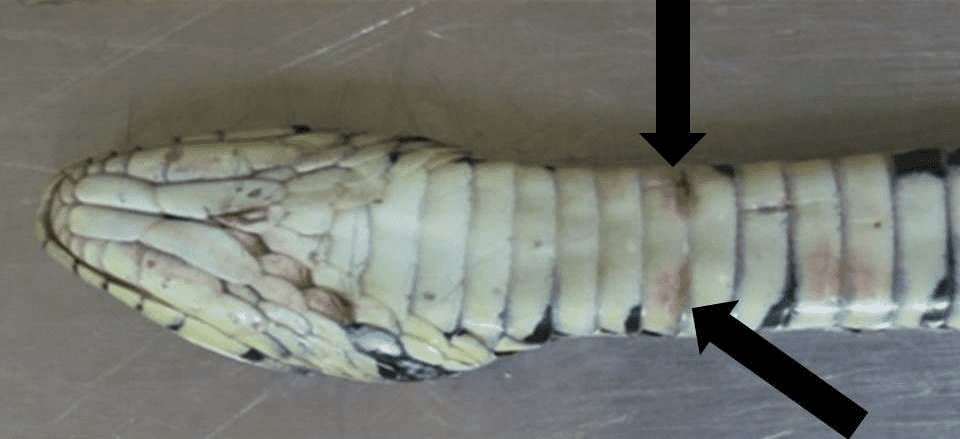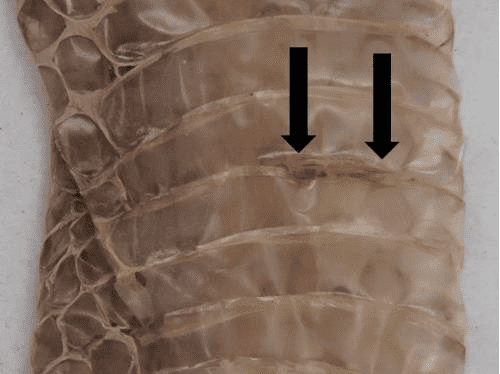Bad news for European snakes — the dreaded fungal disease already reported in the US seems to have spread to Europe as well.

Just a few days ago we were telling you how fungal diseases — already so menacing for frogs, bats, and salamander — are starting to threaten snakes as well. At this point, it’s unclear if a single pathogen is responsible or if it is a series of ailments rather than one, but the most likely culprit seems to be a pathogen called Ophidiomyces ophiodiicola, which causes skin lesions, scabs, and crusty scales and can cause fatal infections in some cases.
So far, over 30 species have been found suffering from the diseases in the US, with some species being more vulnerable than others; specifically, rattlesnakes have been found to be highly at risk. Humans, pets, and livestock are not at risk to the disease. Ophidiomyces ophiodiicola is only known to infect snakes. Now, researchers have found evidence of snake fungal disease (SFD) in Europe as well.
After analyzing samples gathered from wild snakes (the disease was already known in some zoos) from 2010 to 2016 in the United Kingdom and the Czech Republic, researchers have now definitely confirmed the existence of the disease on the Old Continent. Lead author and wildlife veterinarian Dr. Lydia Franklinos said:
“Our team at ZSL found evidence of SFD in grass snakes (Natrix natrix) from the UK and a single dice snake (Natrix tessellata) from the Czech Republic. The analysis found that the fungus strains from Europe are different to those previously identified in North America – suggesting that rather than being introduced across the Atlantic, or vice versa, the disease could have been present below the radar in European snakes for some time.

Detailing their work in an open-access paper published in Scientific Reports, they’ve screened 33 carcasses and 303 molted skins from wild snakes, finding the fungus in 26 (8.6%) specimens across the period of collection. In most cases lesions were mild, but in some cases, researchers believe they contributed or were even decisive for fatality. It’s hard to estimate just how much damage the diseases is causing, and scientists call for more studies to paint a clearer picture. The reclusive nature of snakes certainly isn’t helping in this case.
“Of all terrestrial vertebrate wildlife, we probably know least about health conditions that affect reptiles such as snakes, so this study represents an important milestone and one that will hopefully encourage greater focus in understanding the threats facing these animals,” Franklinos adds.
Fungal pathogens are emerging worldwide at an alarming rate, and kind of snuck up on us. It’s important to understand just how much it spread across the world, and how it affects organisms different based on their environment. This might be the first step towards starting to fight it. Dr. Jeffrey Lorch, a microbiologist with the USGS National Wildlife Health Center and the study’s co-author, said:
“The fungus that causes SFD is already known to occur across the eastern half of the U.S. and infect over 20 species of snakes. Comparing how SFD affects wild snakes on different continents may help us pinpoint the factors causing the disease to emerge and help managers identify mitigation strategies.”
You might think that snakes aren’t that important, or that this is a natural thing and we should just let it follow its course. Snakes aren’t the most popular animals out there either, which likely contributes to the big gaps we have in our understanding of them. But like them or not, snakes play a vital role in ecosystems. Most snakes are middle-order predators, which means they eat some animals and are in turn eaten by others, filling a very important niche.
It’s not clear why this disease is emerging now, either. It could be a foreign, introduced pathogen, or it could be that various species across the planet are developing it independently. That remains to be established by future research. There is a good chance that environmental changes have rendered the snakes unable to defend themselves against the pathogen, or that at least, the changes have weakened them.
Several countries are already working on ways to improve reporting on such matters. In the UK, you can check out the Garden Wildlife Health Project for instance. The full paper is here — open access and published by the Institute of Zoology.






